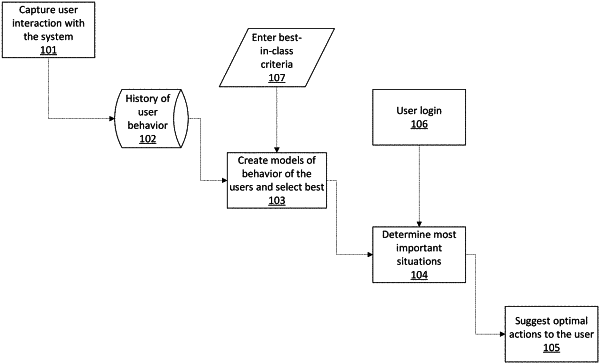| CPC G06F 3/0481 (2013.01) [G06N 5/025 (2013.01); G06N 5/04 (2013.01); G06N 20/00 (2019.01); G06N 20/20 (2019.01)] | 19 Claims |

|
1. An improved method for automatically suggesting optimal actions to a user in a user interface comprising:
receiving a set of input parameters;
accessing a list of possible actions;
filtering the list of possible actions to remove the actions that are not available the user;
looping through the filtered list of possible actions until the filtered list is processed, executing a machine learning model of an optimal user's behavior on each possible action with the set of input parameters to obtain a machine learning score;
storing the machine learning score with the possible action;
once the list of possible actions is processed, sorting the list of possible actions by the machine learning score;
selecting the possible actions with high machine learning scores; offering the user options to perform the possible actions;
wherein the machine learning model is built by iterating through possible rule sets to identify the rule set with a best quality score using a data set of previous user behavior; and
wherein before the looping through the filtered list of possible actions, accessing a list of possible situations; looping through the list of possible situations until the list of possible situations is processed, executing a situations machine learning model of user behavior on each possible situation with the input parameters to obtain a situations machine learning score: storing the situations machine learning score with the possible situation: once the list of possible situations is processed, sorting the list of possible situations by the score: selecting the possible situations with high scores.
|